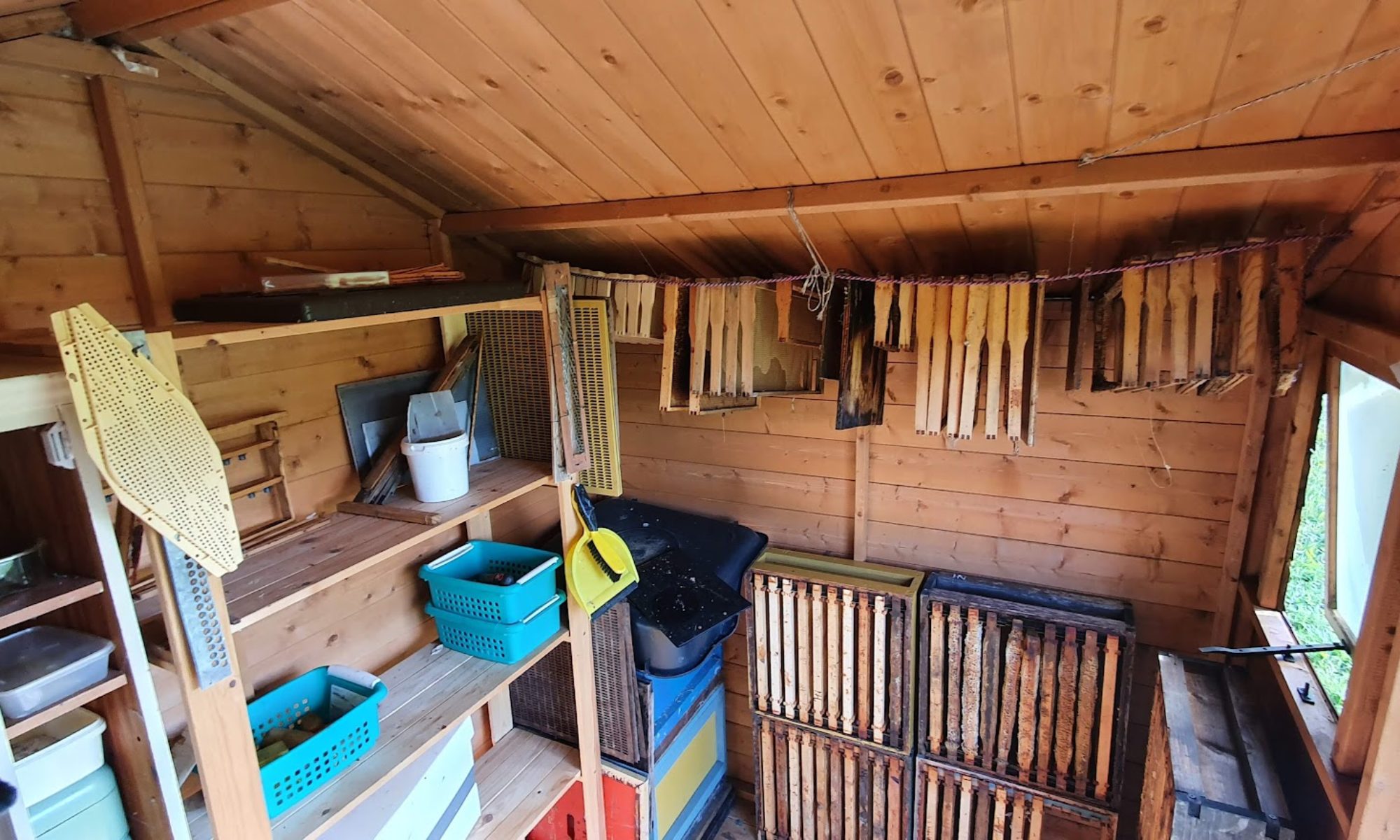http://adventuresinbeeland.com/2015/12/05/royal-jelly-a-story-by-roald-dahl
If you’ve ever read Roald Dahl’s short stories for adults, you’ll know they’re very different in tone to his more famous children’s books. My mum had both his Kiss Kiss and Switch Bitch collections and I re-read them quite a few times as a child, including the story Royal Jelly. This week I was in the Barbican Library near my work and stopped to check out the returned shelves. One of the books there happened to be Kiss Kiss, so I got it out specially to read Royal Jelly again. As a child my knowledge of bees was basic, so the story had a new fascination now that I’m a beekeeper. The plot involves a married couple who have just had a long-awaited child. The mother, Mabel Taylor, is “half dead with exhaustion”, out of her mind with worry because the baby girl will hardly take any milk. This baby is eating so little that at six weeks old she weighs two pounds less than she did at birth. Then an idea comes to Mabel’s husband, Albert. He is a professional beekeeper and whilst reading his beekeeping magazine comes across an article on royal jelly. The article details the wonderful properties of royal jelly, including the tremendous weight gain of a honey bee larva fed on it. ‘Aha’ thinks Albert – and proceeds to add royal jelly to his little girl’s feed. The strategy works, with the baby greedily lapping up this new formula and crying for more – but this new enriched milk also has some unexpected side-effects. Queen larva floating in royal jelly Uncapped queen cell Swarm season Reading the story now, I was surprised by how detailed and accurate Dahl’s descriptions of bee biology and beekeeping generally were. He must have done a fair amount of research to write the story. For instance, take the articles listed in the contents page from his bee journal: Among the Bees in May; Honey Cookery; Experience in the Control of Nosema; The Latest on Royal Jelly; This Week in the Apiary; The Healing Power of Propolis. The story was first published in 1959 and yet these could be articles from a current journal. His descriptions of royal jelly were accurate according to scientific knowledge at the time. For instance, Albert Taylor explains to his wife that it “can transform a plain dull-looking little worker bee with practically no sex organs at all into a great big beautiful fertile queen”. Worker larvae receive pure royal jelly for only the first three days of their lives, after which they are fed a mixture of royal jelly, honey and pollen. In contrast a larva chosen to become a queen receives only an abundance of royal jelly throughout her larval life, so much so that she is literally floating in it. For years it has indeed been accepted opinion that royal jelly is the miracle food which has the ability to turn an ordinary female larva, laid from an identical egg to her sisters, into a queen. However, some new research published in August 2015 suggests that what really matters is what larvae chosen to become queens aren’t fed – the pollen and honey their ordinary worker sisters get. In 2008, Australian scientist Dr. Ryszard Maleszka managed to create queens in his lab without feeding them any royal jelly (by silencing a set of genes). One theory is that receiving no pollen provides chemical protection for the queen’s ovaries, as she is sheltered from the potential toxic or metabolic effects of plant chemicals. All this is a rather round-about way of recommending this story to you and also mentioning that in April 2016 I’m expecting a little drone – just in time for swarm season. Having read the story, I will not be feeding him any royal jelly! References: A dietary phytochemical alters caste-associated gene expression in honey bees (Wenfu Mao, Mary A. Schuler and May R. Berenbaum, Science Advances, 28 Aug 2015: Vol. 1, no. 7) – the scientific paper Royal jelly isn’t what makes a queen bee a queen bee (Gwen Pearson, Wired.com, September 2015) – the reader-friendly version
— gReader
